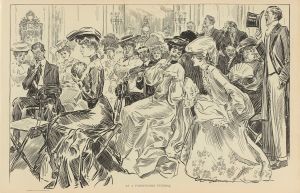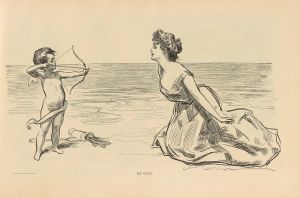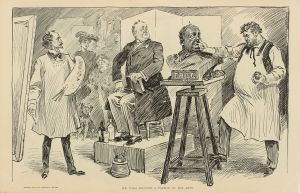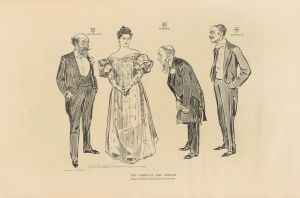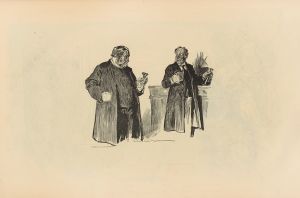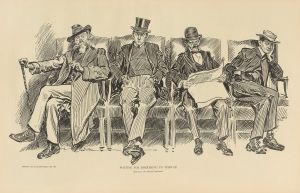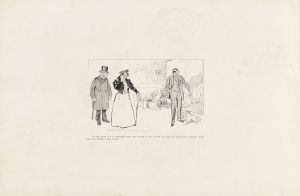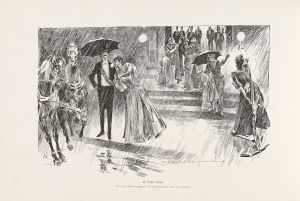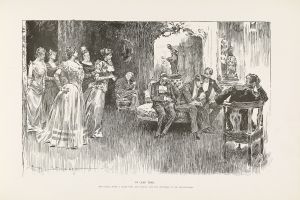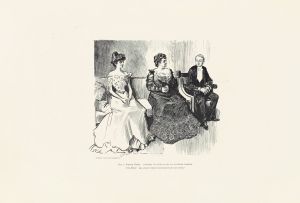
People who will have their own way – The girl who refused us
A hand-painted replica of Charles Dana Gibson’s masterpiece People who will have their own way – The girl who refused us, meticulously crafted by professional artists to capture the true essence of the original. Each piece is created with museum-quality canvas and rare mineral pigments, carefully painted by experienced artists with delicate brushstrokes and rich, layered colors to perfectly recreate the texture of the original artwork. Unlike machine-printed reproductions, this hand-painted version brings the painting to life, infused with the artist’s emotions and skill in every stroke. Whether for personal collection or home decoration, it instantly elevates the artistic atmosphere of any space.
Charles Dana Gibson was an influential American illustrator best known for creating the "Gibson Girl," an iconic representation of the American woman at the turn of the 20th century. His work captured the spirit and social dynamics of his time, often with a touch of humor and satire. One of his notable illustrations is "People who will have their own way – The girl who refused us."
This illustration is part of Gibson's broader body of work that often depicted the social interactions and gender dynamics of the late 19th and early 20th centuries. The "Gibson Girl" became a cultural phenomenon, symbolizing an idealized version of feminine beauty and independence. She was portrayed as confident, stylish, and somewhat aloof, embodying the changing roles of women during this period.
"People who will have their own way – The girl who refused us" reflects Gibson's keen observation of social mores and his ability to convey complex narratives through simple yet expressive line drawings. The illustration likely depicts a scene where a young woman, embodying the traits of the Gibson Girl, asserts her independence by refusing the advances or requests of others, possibly men. This act of refusal would have been significant at the time, as it highlighted the growing autonomy and assertiveness of women, challenging traditional gender roles.
Gibson's work was published in popular magazines such as Life, Harper's Weekly, and Scribner's, reaching a wide audience and influencing public perceptions of gender and society. His illustrations were not only artistic expressions but also commentaries on the evolving social landscape, capturing the tensions and transformations of the era.
The "Gibson Girl" became a symbol of the Progressive Era, a time when women were increasingly advocating for their rights, including suffrage and greater participation in public life. Gibson's illustrations, including "People who will have their own way – The girl who refused us," played a role in shaping the discourse around these issues by presenting women as active, self-assured individuals.
While specific details about the context or reception of this particular illustration may not be extensively documented, it fits within the broader themes of Gibson's work. His ability to capture the zeitgeist of his time through the lens of gender relations and social commentary remains a significant aspect of his legacy.
Overall, Charles Dana Gibson's illustrations, including "People who will have their own way – The girl who refused us," continue to be appreciated for their artistic merit and their insightful portrayal of early 20th-century American society. They offer a window into the cultural and social dynamics of the era, reflecting both the aspirations and the challenges faced by women as they navigated a rapidly changing world.





